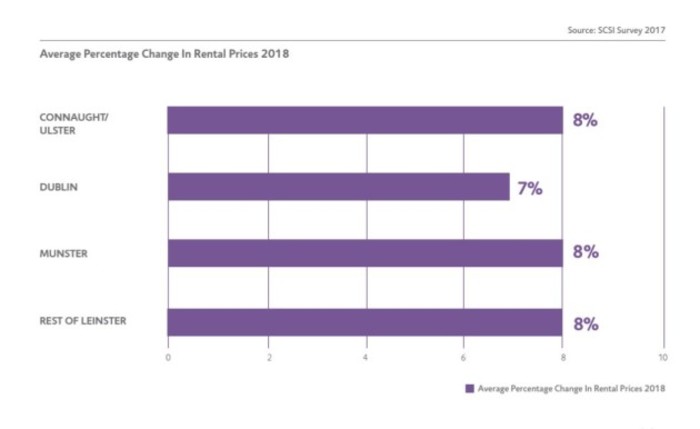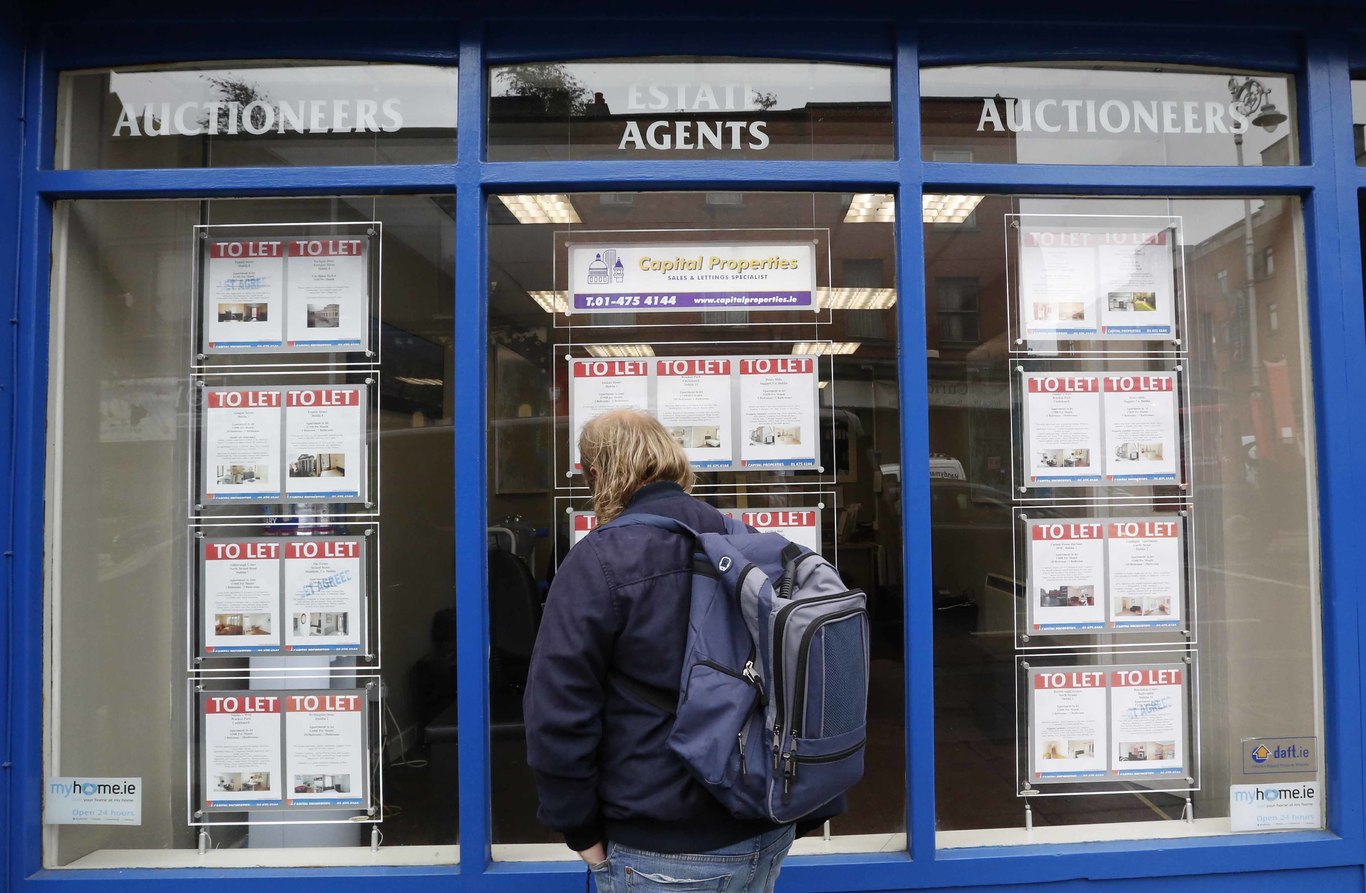Rental caps are forcing landlords out of the market - and maintaining high prices
That’s according to a new report by the Society of Chartered Surveyors Ireland.
RENTAL CAPS ARE pushing landlords out of the market and maintaining already-high prices, according to a new study.
A survey by the Society of Chartered Surveyors Ireland (SCSI) has found that most estate agents and chartered surveyors believe the state’s decision to introduce caps in some areas has encouraged a lot of landlords to exit the market and sell their properties.
In December 2016, the government capped rent increases at 4% for three years in rent pressure zones in Dublin and Cork cities. The measure was subsequently rolled out to other areas including Galway city, Maynooth and Drogheda.
Most of the 400 respondents to the SCSI’s survey believe the measure has “negatively impacted” the supply of rental properties.
Chartered surveyors around the country reported an increase in tenant demand alongside a reduction in landlord ‘instructions’ – requests to rent out homes through a property manager. This trend is expected to continue throughout 2018.
According to the SCSI, average rental prices are expected to rise 7% in Dublin and 8% in all other regions.

Click here to view a larger version
“We estimate that for every three landlords who are selling their buy-to-let property in Dublin, only one new landlord is entering the market,” said John O’Sullivan from the SCSI’s residential agency unit.
He added that most private landlords – an estimated two in three – own just one property and increasingly seem to be of the view that renting is “simply more hassle than it’s worth”.
“Whether it’s due to the rent cap, complex regulations, a punitive tax regime, or a combination of all three, they are voting with their feet,” O’Sullivan said.
He acknowledged that the cap may have moderated the level of rent inflation but added that “the departure of so many landlords ensures rents will remain high”.
“In the absence of a coordinated programme to encourage landlords to remain in the sector or to facilitate ‘Build to Rent’ schemes, a negative outlook for residential tenants will persist into the future,” he said.
Property prices
Elsewhere in the report, the SCSI forecast an 8% increase in property prices this year in all regions except Munster, where a rise of 7% is predicted.
O’Sullivan said the prediction is “on the conservative side” but still too high and unsustainable in the long-term.

Click here to view a larger version
According to the SCSI, one of the main contributors to the cost of new housing is the rising price of development land. Its report found that the value of residential development land increased by 14% in 2017 and is tipped to grow another 11% this year.
“A 25% increase in two years is simply not sustainable and one has to ask in light of that rate of increase if the changes made to the vacant site levy tax in the Budget will be sufficient,” O’Sullivan said.
The vacant site register, which came into force this month, allows local councils to impose fines on anyone sitting on prime development land. Those hit with levies will have to pay 3% of the value of the site.
In the Budget, it was announced that the levy will jump from 3% to 7% on land not sold by 2019.
Society of Chartered Surveyors Ireland director general Áine Myler previously stated that the 7% rate may not be high enough “in a market with double-digit capital appreciation rates on development land”.






